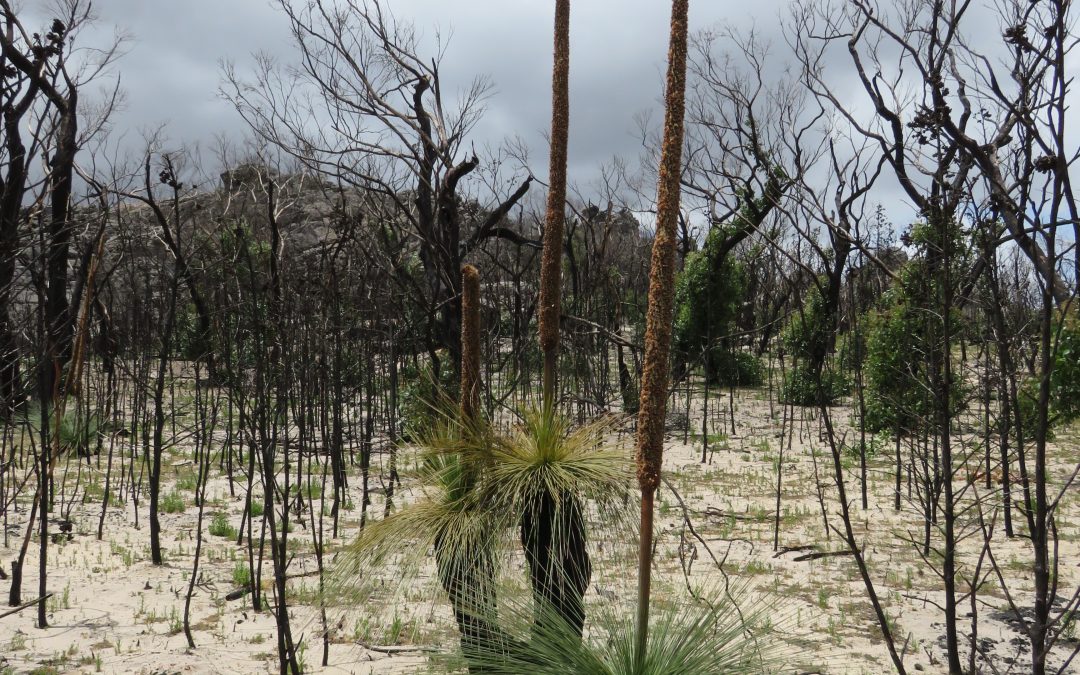THE COST OF RESILIENCE:
Resilience is a topic that keeps appearing, be it workshops, books, or a blog like this one. It seems to be what people want, but do they know what it is that they are wanting? Resilience does not mean being able to go through life without experiencing difficulties or challenges. It doesn’t work that way. Resilience shows up when things are difficult and challenging and ironically, it often doesn’t feel like ‘resilience’ (whatever resilience is meant to feel like). Resilience also develops with experience as we learn what we can actually endure. Having someone to cheer us on helps, but in the end, it is up to the one who is enduring the difficult stuff to keep going – and that is the hard part.
‘Is it worth it?’
I was about two thirds down a descent from a look-out on a hike (pondering how I could start this blog), when I encountered a man and his young daughter who were coming up. The daughter was about 9 or 10 years old and was wearing a Bambi shirt. The dad stopped and asked me, ‘Is it much further?’ I told him that there was still a fair way to go with many stairs ahead. He responded with another question, ‘Is it worth it? Will the view be amazing?’ I assured him of the amazing view. He then turned to Bambi and said, ‘See, it will be worth it, we can keep going. It will be worth it, you will see.’
As we continued in our different directions, I wondered if he had made a good decision for Bambi. They had a lot of climbing to do and it was going to be hard work. Would this be fair on her? I then realised I was falling into the trap of seeking to alleviate discomfort, or more correctly, questioning discomfort. If she kept going and didn’t give up, she would benefit the reward of experiencing the result of her effort. Bambi would potentially learn more by climbing on rather than by turning back.
The tough stuff
When I am hiking there are times when my legs are hurting, my heart is pounding and the sweat drips. On other occasions, it is wet and foggy and cold and the views are obscured by cloud. Is it worth it? Absolutely. On other occasions, it might be pushing through a writing project, or enduring long hours at work. In those difficult moments, I am doing more to demonstrate resilience, though it seldom feels like it. I have also pedalled out long kilometres and have wondered if I am having fun, with potential pleasure obscured by aching muscles and a head-wind; but the end is so much sweeter. What about tough stuff that we do not choose? Work, relationships, communities, sickness, grief, loss, disability, families, mental health, finances, social and political concerns…and more; the ability to keep going within and beyond the unpleasant is resilience.
What develops resilience?
I asked a parent group what they thought helped resilience to develop. I was hoping for responses that included words like ‘endurance, doing it tough, going through difficult circumstances.’ Instead they responded with words like, ‘being encouraged by others, and believing in yourself.’ While that is not untrue, there was a distinct absence of acknowledging the grit and tears and pain that one will go through in order to develop their resilience.
Developing resilience is not a cosy deal of feel good emotions.
It hurts.
Endurance is tough.
It is risky.
Failure is inevitable.
Rising from the failure is optional.
We have resilience within us and it requires deliberate decision-making and a history of difficult circumstances to help us to access it.
Deliberate Decision-making
The deliberate decision-making is the choice to respond to difficult and challenging circumstances by pressing on and not allowing the circumstances to overcome us (as our minds might tell us). This might look like not giving up despite how much easier that would be, it might be having to front up after a humiliating exit the day before, or redoing that project for the fifth or tenth time, working in that low-paying job that you hate in order to pay the rent, getting out of bed when the weight of grief and sadness feels overwhelming. It is putting one foot in front of the other even if the steps are small.
The need for history
A history of difficult circumstances is necessary to equip us with the ability to face more. For Bambi and her father, maybe she complained all of the way, maybe she didn’t enjoy the day. BUT she would now have a history of having faced something difficult. How much better that her history includes a challenging experience that was also safe and controlled, when most of them won’t be. Her benefit is now a positive long-term consequence; ‘Remember that day you didn’t want to do the climb and you made it to the top? See what you have the ability to do.’ When a history of difficulty is lacking or obscured from our own realisation, we need others to cheer us on and maybe even to point it out.
I need to acknowledge that I have met many young people who have already obtained an unfortunate history of difficult challenges. These young people often possess a quality that sets them apart from their peers, and may be described as ‘having a wise head on young shoulders’. This ‘wise-head’ is the result of considerable cost.
Short-Term Consequences Vs Long-Term Consequences
Another way to consider how resilience develops is to use the language of Short-term and Long-Term Consequences. My experience and observation is that generally a positive consequence is off-set by a negative consequence in a kind of opposite cost/benefit trade-off between the Short and Long-term.
|
Positive Short-term Consequence = Negative Long-term Consequence |
|
Negative Short-term Consequence = Positive Long-term Consequence |
If Bambi endured the Negative Short-term Consequence of climbing the track, she would gain the Positive Long-term Consequence of a memory of an incredible view and knowledge of what she can do. If she gave up, she would have the Positive Short-term consequence of no more climbing, with the potential Negative Long-term Consequence of the reinforcement of a life rule that suggests giving up is a better option than endurance. As a child she may not have had choice over her participation in the hike, and there will be many more dramas to come where her participation is not optional. However, on the occasions when the choice is hers, she will now have a broader knowledge of her own abilities to help inform her decision.
Un-glamorous Resilience
Resilience is enduring the tough stuff. It isn’t pretty. It isn’t glamorous. There is much behind the romantic notion of standing on the podium. It is the sweat, heartache, muscle-burn, rejection, failure, betrayal, pain, tears. The strongest people I know have all had their time where they fell to the ground and wished that the pain would end. The people they are now, was an incomprehensible idea at the time of their pain. They now know that their pain is one of the reasons they are who they are today. It is part of their story.
We need to encourage our children and friends and we need our own encouragement. Can we see a better version of another who is in the midst of difficulty, and who are unable to perceive their better self due to their hardship? We all have resilience that is yet to be discoverd. You may actually be more resilient than you thought you were.
Cover picture, six months after 2013 Grampians fires
About Gwen
Gwen is a school teacher, counsellor, author and presenter. Gwen’s counselling practice caters particularly for children, adolescents, teachers and parents, as well as generalised counselling. She works with individuals in relation to mental health and wellbeing. Gwen is the author of Bully Resilience: Changing the Game. See www.equipcc.com.au for more information.



Recent Comments